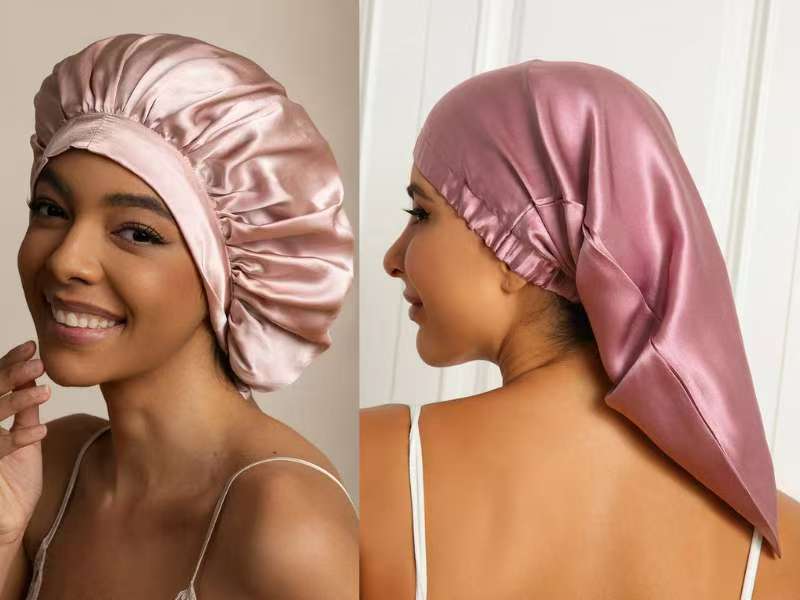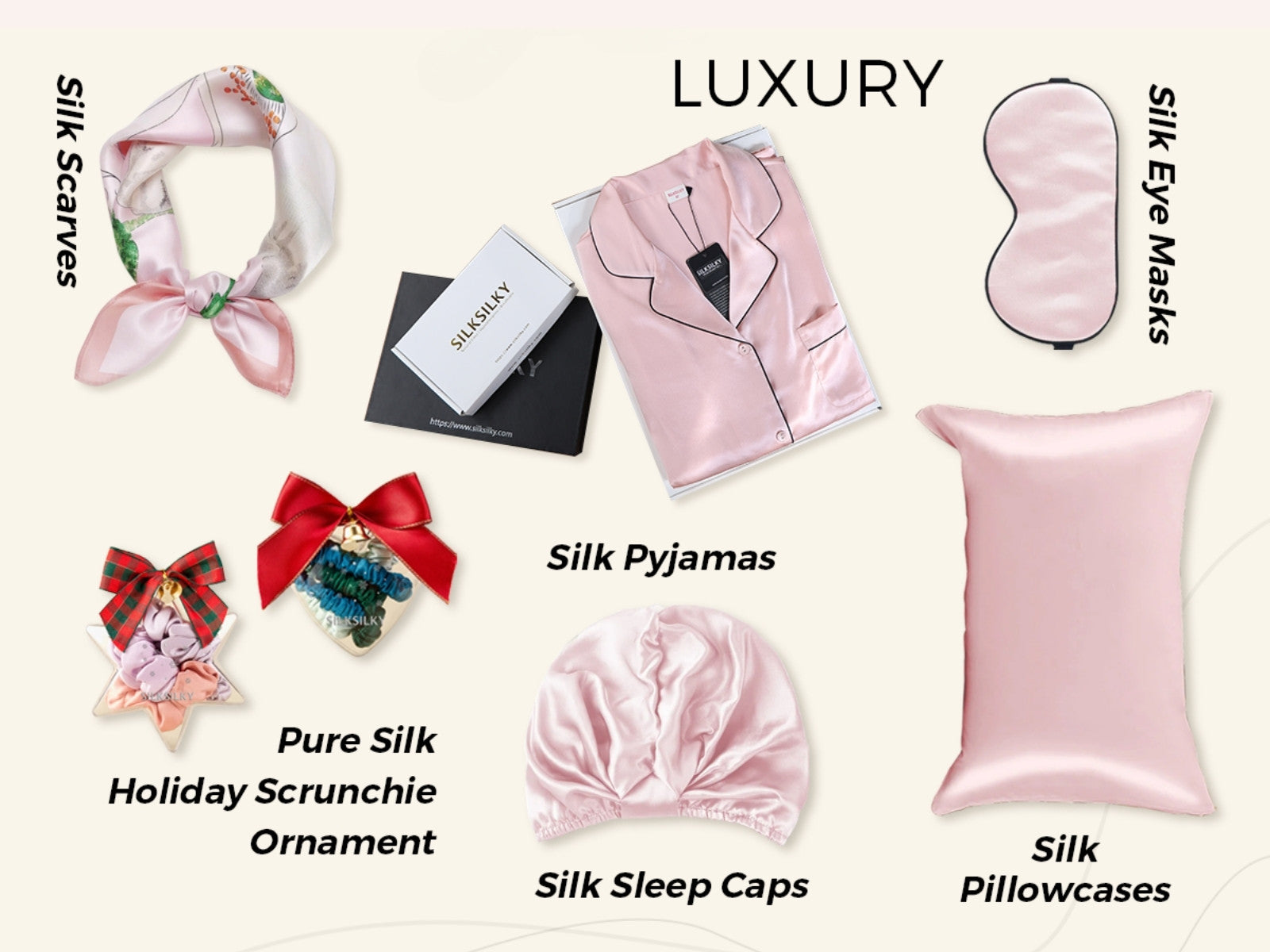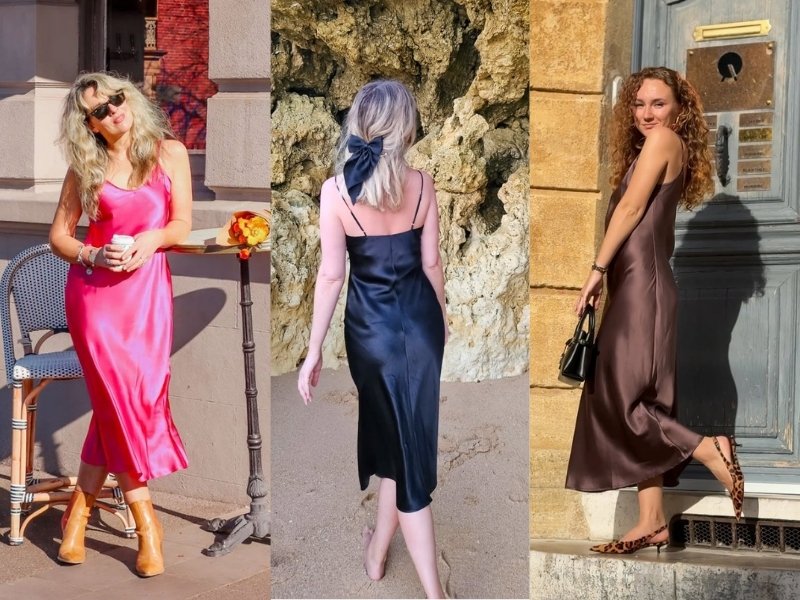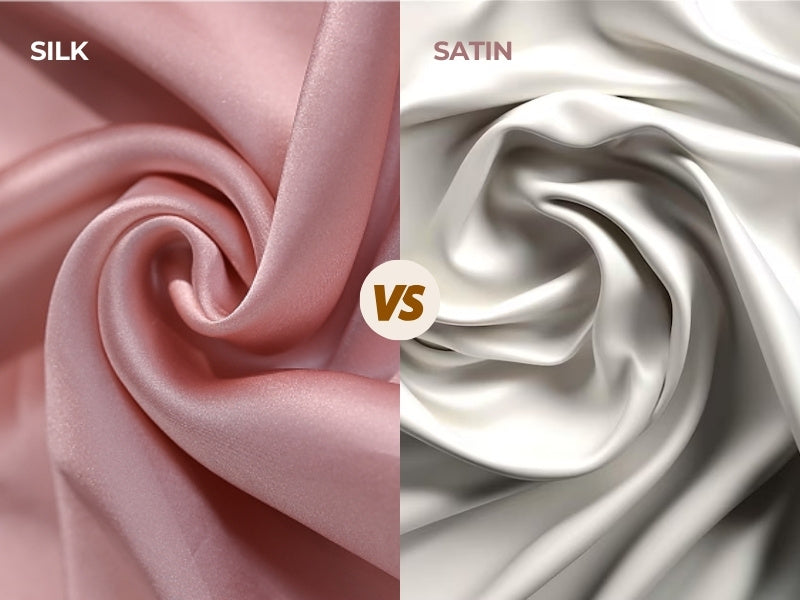Synthetic Silk vs Natural Silk: What's the Difference?
Table of Contents
- WHAT DOES SILK FEEL LIKE?
- DIFFERENCE BETWEEN NATURAL SILK AND ARTIFICIAL SILK
- WHICH TEST IS THE BEST WAY TO IDENTIFY SILK?
How to tell Natural Silk from Synthetic Silk? Read on to find out.
WHAT DOES SILK FEEL LIKE?

Silk first originated in China around 4 thousand years ago, which makes it one of the earliest fabrics produced by a human. Even though Chinese emperors loved wearing silk clothes, they were quite secretive about the nuances of silk production effectively maintaining a monopoly until the Silk Road opened around 500 BC.
Now, the times have changed, we are not afraid to answer the question ”What does silk feel like?”. This fabric is soft and gentle to the touch yet quite stretchy, very smooth and hypoallergenic.
The fact that natural silk is hypoallergenic and elastic makes it an ideal material for bedsheets, clothes, scrunchies, and other accessories.
Those of you who are still a bit skeptical might ask “Why can’t I just wear a regular, cotton scrunchie?”. Well, here are a few more arguments in favor of silk scrunchies specifically:
- TACTILE SENSATION
- completely harmless for your hair: no tangled bundles, no frizziness, no kinks or creases often associated with cotton scrunchies;
- silk scrunchies do make your hair dry: owing much to its natural components, silk helps to keep your hair elastic;
- always a stylish and cool-looking accessory that would complement any style;
- silk scrunchies are great for keeping your hair in place no matter what you do;
- silk scrunchies never lose their form and always gentle to the touch.
- Well, we hope that was enough arguments to answer the question “What does silk fabric feel like?”. Now, let’s talk about how to spot a fake silk material.
DIFFERENCE BETWEEN NATURAL SILK AND ARTIFICIAL SILK
Prepare for the real battle between 100% natural silk vs. synthetic. The winner gets to be the material for your scrunchie. Ready?
TEXTURE
Synthetic silk is unrealistically smooth and straight while natural silk is not so even in its texture: there will always be certain imperfections indicating the handmade nature of the material.
The soft and elastic nature of silk allows for one easy test you can make: just squeeze the fabric in your hand tightly and see if it leaves any crease marks. Natural silk should not have them while the synthetic one will have clearly visible creases.
GLOSS
To spot real silk vs. fake silk, you need to see how the fabric reacts to light. Natural silk will produce a slight gloss - if you place it in the sunlight, you may even see the silk shine and sparkle a bit. Artificial silk, on the other hand, is rather dull and does not shine in the light.
TACTILE SENSATION
Natural silk is always gentle and soft to the touch - an instantly recognizable and unique sensation, like the fabric is slowly melting in your hands. Synthetic silk does not feel anything like this - it feels like a regular soft cloth.
There’s another great way how to tell if the fabric is silk or polyester - it’s the temperature. Artificial silk will leave a cold sensation on your skin while the real silk quickly assumes your body temperature and feels natural.
RESISTANCE TO TEAR
Let’s check synthetic silk vs. natural silk tensile strength. Synthetic silk can be easily torn into pieces while natural silk is really tough to tear as its threads are very strong.
One more test you can perform - pull out a thread from the cloth and try to fluff it up. If you’re dealing with natural silk, the thread will remain unchanged while a synthetic silk thread will actually become fluffy.
PRICE
Arguably the most obvious way to tell the real from the fake. Natural, quality silk is a rather expensive material and it simply cannot be sold for the same price as cotton or linen.
Now, let’s talk about the differences between the main types of silk and how to spot them - here are examples of natural silk and artificial silk:
| Natural silk | Natural silk mixed with synthetic in various proportions | Synthetic silk |
|
✓ Mulberry silk - high-quality material produced from the silkworm, a caterpillar of the domestic silk moth. This is the material we use at SILKSILKY for manufacturing scrunchies, 19-22 momme thick, which is ideal for skin. ✓ Tussah silk is a variety of wild silk coming from silkworms fed on oak leaves. It is very lightweight |
✓ Chiffon - a lightweight, plain-woven sheer fabric made from silk ✓ Organza - a thin, plain-woven sheer fabric, also made from silk. Very lightweight ✓ Satin - a thick, smooth, and soft fabric ✓ Crêpe - a thick and rather soft fabric with a moderate gloss |
✓ Acetate silk - an artificial fabric made with spun filaments of cellulose taken from wood pulp. It’s rather soft, glossy, and stretchy although highly degradable if treated with acetone ✓ Viscose silk is a type of rayon, aka “artificial” silk. Soft, hygroscopic fabric with a clearly visible gloss. Unlike acetate silk, this material is less stretchy and durable: it gets wrinkled and may shrink after wash. |
WHICH TEST IS THE BEST WAY TO IDENTIFY SILK?
If you’re still asking yourself the question “How can I identify silk fabric?”, here’s a failproof test that can help you easily tell if it’s real silk or not.
Pull out a few threads from the side of the cloth and light them up. As they’re burning, watch closely to see if:
The threads will crumple and smell like burning hair - this is a clear sign of authentic, natural silk. After they burn down, you should get a bunch of ashes, which are easily scattered
There is no smell of burnt plastic. If there is, then you’re dealing with synthetic silk. Also, if there’s black smoke coming from the fire and the threads are still smoldering after you put them out, then it’s artificial silk for sure.
Now that you know how to identify silk, you will be able to spot a fake right away. However, this is a skill you will never have to use when ordering from SILKSILKY since we offer our clients only 100% pure mulberry silk.
Our silk products are manufactured in China up to the strictest standards so you know you’re getting the best for your skin.

![[Light Blue] SilkSilky Pure Silk Notch Collar Women's Pajamas 001,](http://silksilky.com/cdn/shop/files/ab83afb9301666ee2f174a8ae72ffda4_4e9bb488-7880-40fe-9e69-f0fd823857c5.jpg?v=1763088039&width=1200)
![[Light Blue] SilkSilky Pure Silk Notch Collar Women's Pajamas 002,](http://silksilky.com/cdn/shop/files/db8dbeee5354fe3b631b963715847ffe.jpg?v=1763088039&width=1200)
![[White] SilkSilky Pure Silk V Neck Nightgown 001,](http://silksilky.com/cdn/shop/files/a8ae95260a57844b1e2e00c4fcfabdcc_b922b270-af10-4e96-9493-0d877bd663db.jpg?v=1762228760&width=1200)
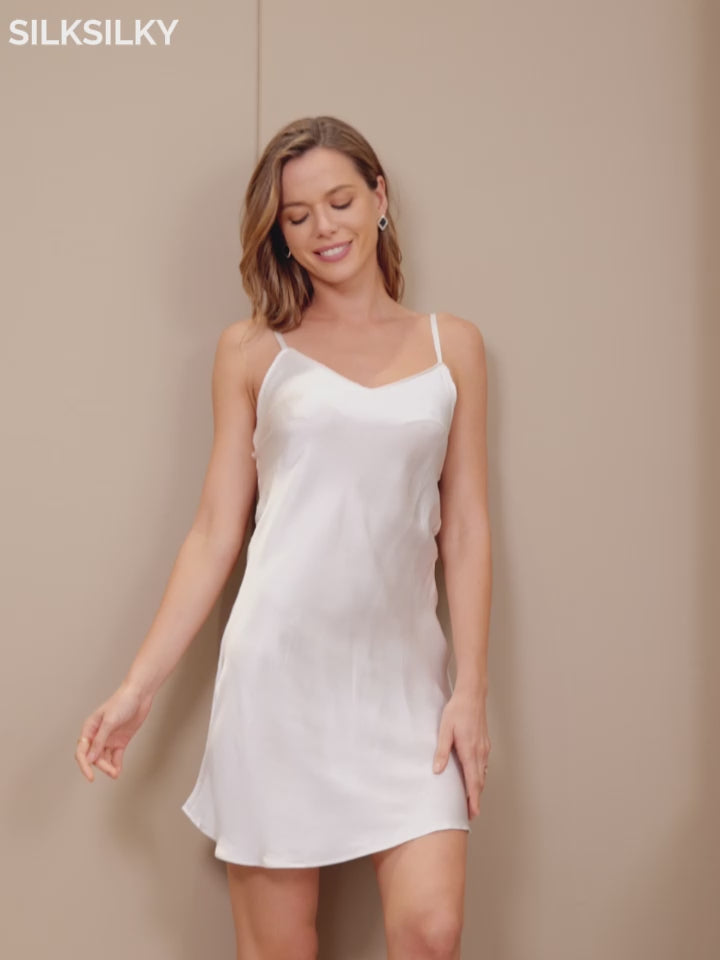
![[Pink] SilkSilky Pure Silk Sleep Cap 001,](http://silksilky.com/cdn/shop/files/SilkSilky_Pure_Silk_Sleep_Cap_Pink_001_C-250529006.jpg?v=1762221980&width=1200)
![[Pink] SilkSilky Pure Silk Sleep Cap 002,](http://silksilky.com/cdn/shop/files/SilkSilky_Pure_Silk_Sleep_Cap_Pink_002_C-250529006.jpg?v=1762221980&width=1200)
![[Red] SilkSilky Silk Lapel Collar Women's Shirt 001,](http://silksilky.com/cdn/shop/files/6bd686bcc10482ab0a3ae462f2b8e47a_54fa034e-da91-4f5a-9fd0-df81de7898ec.jpg?v=1762226488&width=1200)
![[Red] SilkSilky Silk Lapel Collar Women's Shirt 002,](http://silksilky.com/cdn/shop/files/93322b7519a287b4cadf150d9f1eb209.jpg?v=1762226488&width=1200)
![[Dark Blue] SilkSilky 19Momme Pure Silk Notch Collar Women's Pajamas 001,](http://silksilky.com/cdn/shop/files/a3a1bba736f86048192bee870ad3e638_be7e8977-dfbe-4235-87ac-1471e906d5e9.jpg?v=1763547174&width=1200)
![[Dark Blue] SilkSilky 19Momme Pure Silk Notch Collar Women's Pajamas 002,](http://silksilky.com/cdn/shop/files/3a1b158868225840e725562c4d5c7c9c_50e1a43d-6284-4def-9c49-bb64a6300eee.jpg?v=1763547174&width=1200)



